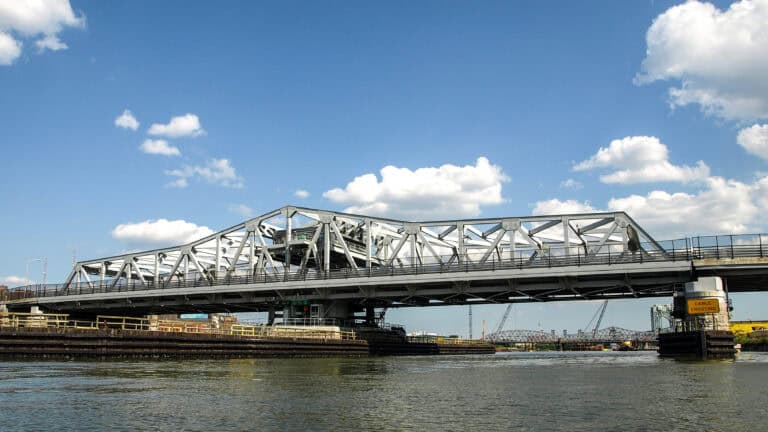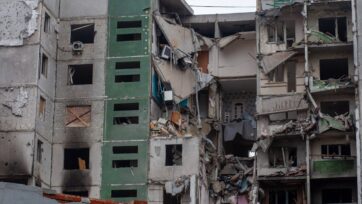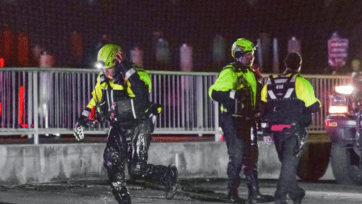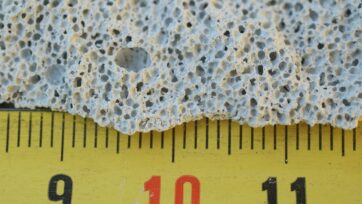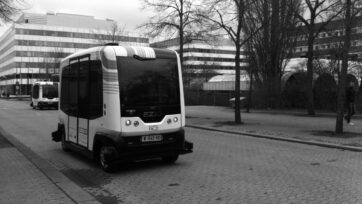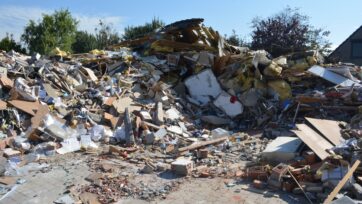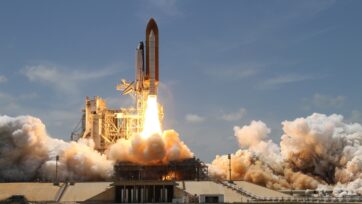Third Avenue Bridge (Image credit: Jag9889)
On a scorching day in New York City, the Third Avenue Bridge, an essential connection between Manhattan and the Bronx, experienced a significant malfunction when it remained stuck in an open position. This incident not only caused major disruptions to traffic flow but also sparked concerns about the preparedness of urban infrastructure in general for unusual stress.
Detailed Breakdown of the Incident
The Third Avenue Bridge is designed to open and close to allow river traffic to pass—a function controlled by a series of mechanical and hydraulic subsystems. On this particular day, as temperatures soared to an unusually high level, a critical component of the bridge’s machinery expanded more than design tolerances could accommodate. The expansion affected the bridge’s locking mechanism, which is crucial for securing the bridge in a closed position for vehicular traffic.
Upon opening to permit a passing vessel, the bridge roadway could not be positioned back into place. Initial assessments pointed to a specific locking mechanism that failed to engage due to the thermal expansion of its metal components. This type of expansion alters the shape and size of materials, which, in the case of precision engineering such as bridge mechanics, leaves little room for error without causing malfunction.
Footage of the bridge reopening. (Video credit: Eyewitness News)
Engineering Analysis and Immediate Response
Technicians at the scene worked to cool down the affected components, since reducing the temperature was essential to contract the metal back to its normal size and allow the locking mechanism to function correctly. This process involved the application of cold water and the temporary installation of heat shields to prevent further thermal interference.
The response team employed thermal imaging cameras to identify the most critically affected components and to monitor the temperature changes during the cooling process. Such tools are invaluable in situations where direct measurement could be hazardous or impractical.
Long-term Engineering Considerations and Solutions
This incident serves as a case study for the potential impacts of thermal expansion on infrastructure components, especially in the presence of climate change. It underscores the importance of carefully considering environmental factors in the design and maintenance of mechanical systems. For urban bridges, particularly those with moving components like the Third Avenue Bridge, engineering specifications may need to be revisited and changes made to accommodate greater temperature ranges.
Materials engineering could offer solutions such as the use of alloys designed for low thermal expansion, or the incorporation of adjustable components that can tolerate or automatically compensate for size changes due to temperature fluctuations.
Systems Engineering Perspective
From a systems engineering standpoint, the bridge malfunction highlights the interconnectedness of environmental conditions and mechanical performance. Systems engineering emphasizes the importance of carefully defining requirements on a lifecycle basis, taking into account predictable changes in environments over time, designing adaptable systems that can perform under a variety of conditions, predicting possible failures using techniques integral with design such as Failure Modes and Effects Analysis and Fault Tree Analysis, and implementing measures to mitigate risk.
In urban settings, in situations where infrastructure failures could have serious repercussions, it may be appropriate to consider the incorporation of real-time monitoring as a mitigation strategy. Such monitoring could provide early warnings based on predictive analytics that factor in weather conditions, mechanical status, and historical data to preemptively address some potential issues before they lead to severe disruption.
References
ABC News New York, 2024, ‘Third Avenue bridge connecting Bronx, Manhattan stuck in open position’, ABC7 New York, viewed 8 July 2024, <https://abc7ny.com/post/avenue-bridge-connecting-bronx-manhattan-stuck-open-position/15043550/>
New York Daily News, 2024, ‘High temps prompt Third Avenue Bridge to malfunction and close, snarling traffic’, NY Daily News, viewed 8 July 2024, <https://www.nydailynews.com/2024/07/08/high-temps-prompt-third-avenue-bridge-to-malfunction-and-close-snarling-traffic/>
NBC New York, 2024, ‘It’s so hot that a NYC bridge literally stopped working’, NBC New York, viewed 8 July 2024, <https://www.nbcnewyork.com/news/its-so-hot-that-a-nyc-bridge-literally-stopped-working/5576418/>
Fox 5 New York, 2024, ‘Third Avenue Bridge stuck open due to overheating’, FOX 5 New York, viewed 8 July 2024, <https://www.fox5ny.com/news/third-avenue-bridge-stuck-open-due-overheating>
CBS News New York, 2024, ‘Third Avenue Bridge stuck open’, CBS News, viewed 8 July 2024, <https://www.cbsnews.com/newyork/news/third-avenue-bridge-stuck-open/>
